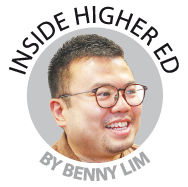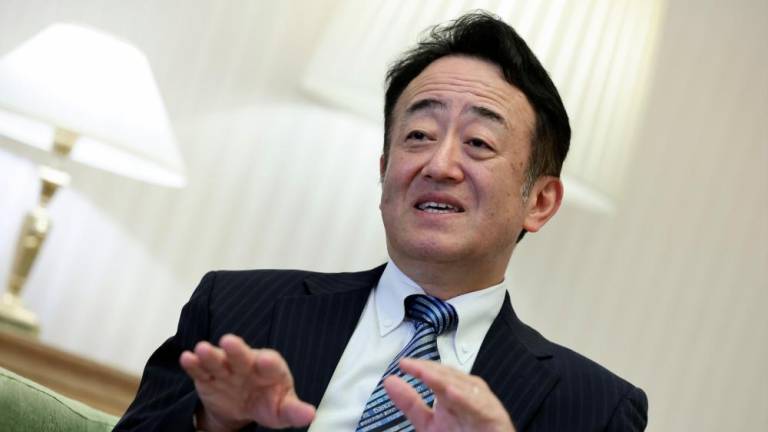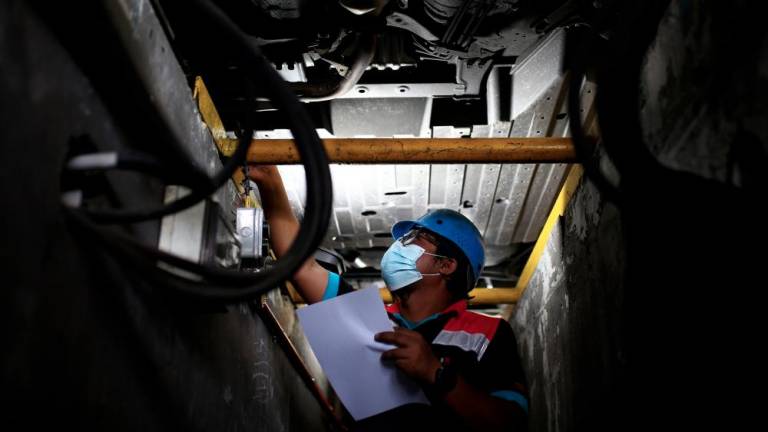EARLY this month, Quacquarelli Symonds (QS) released the latest World University Ranking 2021. Several Malaysian universities have moved up the ranks as compared to previous years.
Like previous years, University of Malaya (UM) tops the ranking of Malaysian universities with a world ranking of 59, jumping 90 places in just five years. For the first time, two Malaysian private universities also made it into the top 400 universities in the world. This is definitely great news for the higher education sector in Malaysia.
University ranking certainly has its advantages. For one, the criteria set by rankers serve as useful guidelines for universities to continuously improve themselves. In the pursuit of a better position on the chart, universities are motivated to work towards fulfilling the set criteria, and in doing so, improve their quality and governance.
As higher education becomes more globalised, university rankings are good references for future students (and parents) to make comparisons to aid decision making.
However, higher education stakeholders should not be overtly obsessed with university rankings.
Each ranker has its own methodologies. For instance QS focuses on academic (40%) and employer reputation (10%), citation per faculty (20%), faculty to student ratio (20%), as well as the proportion of international faculty members and students (10%).
Times Higher Education (THE), on the other hand, looks into teaching and learning (30%), research volume and citation (60%), international outlook (7.5%), and industry income (2.5%). THE distinctly allocates more weightage to research as compared to QS.
Hence, there are discrepancies sometimes in the ranking of the same university between the two rankers. UM, for instance, is positioned between the 301st and 350th place on THE World University Ranking 2020.
I will further discuss some of the criteria of the rankers, namely, academic reputation, research and internationalisation.
The scores for academic reputation are computed based on feedback from higher education practitioners. Even if the data was collected in an objective manner, one could still challenge the subjectivity of participants, as some of them might already have pre-conceived ideas on which universities are “better”, based on previous rankings and media hype.
It is also worth noting that some universities centre on niche disciplines, such as hospitality and tourism, creative design, information technology, business, etc. These universities might be well-regarded by stakeholders within their respective specialisation but not in the wider context of the academic community.
Let’s not forget about lifelong learning universities, which offer working adults the opportunity to upgrade their qualifications through more flexible modes of study. Higher education practitioners from conventional university settings might deem flexible education as less academically sound, and therefore provide poorer assessments of these universities.
I spent years as a faculty member in a comprehensive public research university in Hong Kong, which has always been among the top 60 universities in both QS and THE rankings. As an academic staff member of the university, I was assigned an annual teaching load of no more than 156 hours a year, along with generous research funding and leave (up to three months each year).
This infrastructure truly supports faculty members and their research. It therefore seems fair that the university expects academics to actively contribute to research.
Unfortunately, for the sake of ranking, there are universities that expect their faculty members to churn out research publications, while still having to teach over 500 hours per academic year. In many cases, they do not allocate adequate resources for their academicians to carry out their research projects.
No doubt, one of the key roles of universities is in knowledge generation. Nevertheless, research publication is just one of the multiple ways in which a university shares knowledge.
A good number of universities are, in fact, teaching universities, where a large part of their resources are devoted to enhancing their teaching and learning capabilities. These universities generate knowledge through research-led practice and experiential learning. More often than not, the knowledge is not captured as research output.
Earlier this year, the Ministry of Education released a report on the future of private higher education in Malaysia. One of the key proposed strategies is internationalisation. As an education hub, Malaysia does attract students seeking higher education from around the world.
However, apart from having a diverse student population, ranking bodies also look into the internationalisation of faculty members. Unfortunately, salaries in the Malaysian higher education sector still pale in comparison to other Asian countries such as Singapore, Brunei, Hong Kong and China.
I am not denying the importance of university ranking. However, this could sometimes lead to excluded universities being judged negatively. One thing is for sure – a low ranking or being excluded from the rank tables is not an indication of poorer teaching and learning quality.
As the process of ranking continues to commercialise over time, more universities will join in the exercise. In fact, some universities have already set up dedicated offices for the sole purpose of improving their ranking.
Evidently, there is no way university ranking will phase out anytime soon.
At the end of the day, the onus lies with students (and their parents) to actively research into the different ranking bodies, bearing in mind that there are non- or lowly-ranked teaching universities that provide excellent teaching and learning experiences for their students.
Associate Professor Dr Benny Lim is the Dean of Faculty of Liberal Arts, Berjaya University College. The views expressed in this article are his own and do not represent the university he is associated with. Comments: letters@thesundaily.com













